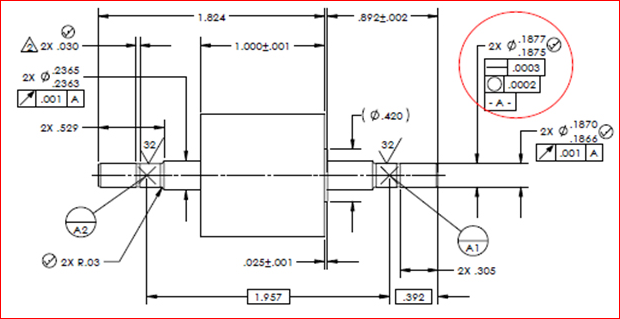Is the callout shown DML or surface straightness?
1.) DML becauase it is associated with the size dimension
2.) Surface straightness because does not have the Ø symbol.
3.) DML because is bigger than the size tolerance.

"Expert" solution was: According to Rule #1 in the Y14.5 standard on Dimensioning and Tolerancing the size tolerance controls the surface form on all rigid parts. Since the size tolerance is a diameter of .0002, it already controls cylindricity (roundness, straightness and taper) to within a diameter of .0002. This is less than the straightness control of .0003 and the roundness control which is .0002 per side or a diameter of .0004. So, both the straightness and roundness geometric controls should be removed.
Do you agree with the advice?
Why shown callout cannot be considered DML ?
1.) DML becauase it is associated with the size dimension
2.) Surface straightness because does not have the Ø symbol.
3.) DML because is bigger than the size tolerance.

"Expert" solution was: According to Rule #1 in the Y14.5 standard on Dimensioning and Tolerancing the size tolerance controls the surface form on all rigid parts. Since the size tolerance is a diameter of .0002, it already controls cylindricity (roundness, straightness and taper) to within a diameter of .0002. This is less than the straightness control of .0003 and the roundness control which is .0002 per side or a diameter of .0004. So, both the straightness and roundness geometric controls should be removed.
Do you agree with the advice?
Why shown callout cannot be considered DML ?
